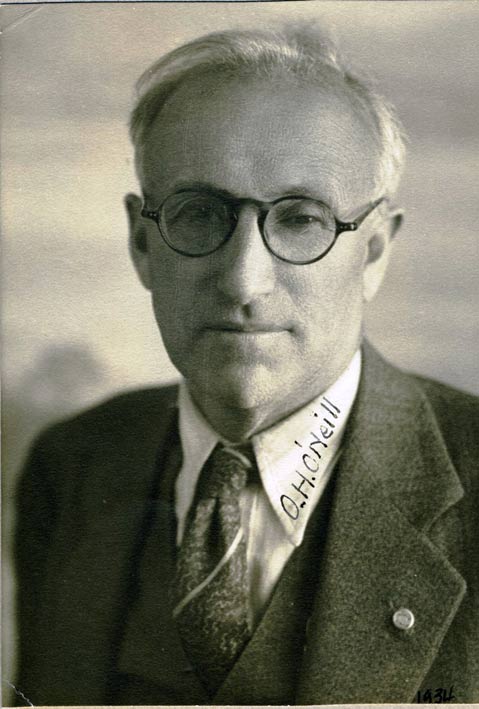Owen O’Neill
Engineer, Surveyor, Miner, and Public Servant
He was an engineer, a surveyor, miner, and public servant, and was responsible for one of the seminal works in Santa Barbara County history. Owen Hugh O’Neill was a man who, in his own words, found “adventure in anything.”
He was born in 1873 in La Graciosa, the first settlement in the Santa Maria Valley. Located just south of today’s Guadalupe, its inhabitants were evicted and the town erased from the map in 1877, the result of a lawsuit brought by a local ranch owner.
O’Neill’s father was a native of Ireland. A graduate of the University of Dublin, he became embroiled in rebellion against English rule and was sentenced to prison in the penal colony on Tasmania. He escaped and made his way to the U.S., where he served in the army in the mid 1850s. He then taught school in Northern California and earned a medical degree. He finally settled into medical practice in northern Santa Barbara County.

Dr. O’Neill died of pneumonia when his son was just 2 years old. His widow was a daughter of Daniel Hill, one of the earliest settlers in the Goleta Valley. Hill had married a daughter of José Francisco Ortega, first comandante of the Santa Barbara Presidio. Young Owen was well aware of his early Santa Barbara roots.
The family moved to Santa Barbara, and O’Neill took a number of jobs to help make ends meet: ranch hand, postal clerk, typesetter for the weekly Santa Barbara Herald. In 1902, O’Neill was off to Mexico, where he worked on a rubber plantation.
For eight years, he alternated time between Mexico and Santa Barbara. In 1904, an accident caused the loss of sight in his left eye: While on maneuvers with the Santa Barbara contingent of the Naval Militia, a trainee’s rifle loaded with blanks discharged into O’Neill’s face.
One of his primary jobs in Mexico during this time was foreman for a copper mining company. The outbreak of revolution in 1910 prompted O’Neill to return to the U.S. During one of his sojourns in Acapulco, he had met Zaida Frisbie. The couple married in Benson, Arizona, in 1910. The local sheriff and his deputy acted as witnesses; among the celebrants were the six prisoners serving time in the local jail.
The couple moved to Santa Barbara in 1912. Eventually, there would be 12 children in their family. O’Neill liked to tell the story of the time they left one of the children behind at the beach. The oversight went unnoticed until the family was just finishing dinner at home when the footsore, teary-eyed youngster showed up on the doorstep.
O’Neill went to work for the county engineer and, in 1915, ran for and won the position of County Surveyor, defeating his friend and longtime incumbent Frank Flournoy. It was a position he held until 1946, when he “retired.” Retirement for O’Neill meant running for City Council and representing the 5th Ward, which included the upper Eastside and part of the Northside, until he stepped down in 1949.
O’Neill had always been deeply involved in civic affairs. He helped found Old Spanish Days Fiesta in 1924. He numbered among his friends Max Fleischmann, whose largesse helped build the Santa Barbara harbor, and cowboy artist Edward Borein. He had always been interested in California and area history. In 1939, he acted as editor-in-chief of History of Santa Barbara County, State of California: Its People and Its Resources. This book of more than 900 pages remains a work of major importance on the history of the Santa Barbara area.
Owen O’Neill died at 94 in 1967. His had been a life of adventure and accomplishment.



